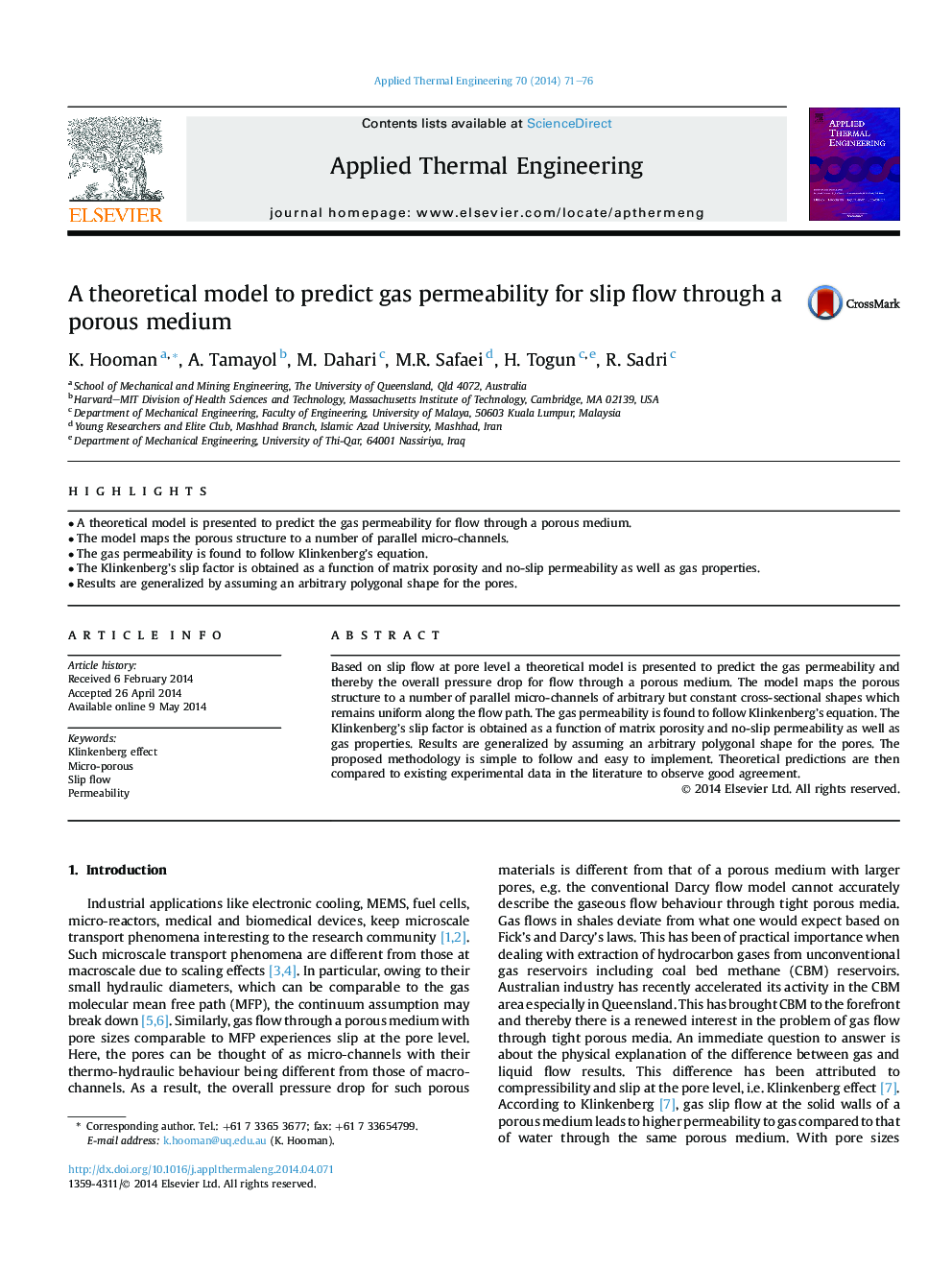| Article ID | Journal | Published Year | Pages | File Type |
|---|---|---|---|---|
| 646250 | Applied Thermal Engineering | 2014 | 6 Pages |
•A theoretical model is presented to predict the gas permeability for flow through a porous medium.•The model maps the porous structure to a number of parallel micro-channels.•The gas permeability is found to follow Klinkenberg's equation.•The Klinkenberg's slip factor is obtained as a function of matrix porosity and no-slip permeability as well as gas properties.•Results are generalized by assuming an arbitrary polygonal shape for the pores.
Based on slip flow at pore level a theoretical model is presented to predict the gas permeability and thereby the overall pressure drop for flow through a porous medium. The model maps the porous structure to a number of parallel micro-channels of arbitrary but constant cross-sectional shapes which remains uniform along the flow path. The gas permeability is found to follow Klinkenberg's equation. The Klinkenberg's slip factor is obtained as a function of matrix porosity and no-slip permeability as well as gas properties. Results are generalized by assuming an arbitrary polygonal shape for the pores. The proposed methodology is simple to follow and easy to implement. Theoretical predictions are then compared to existing experimental data in the literature to observe good agreement.
